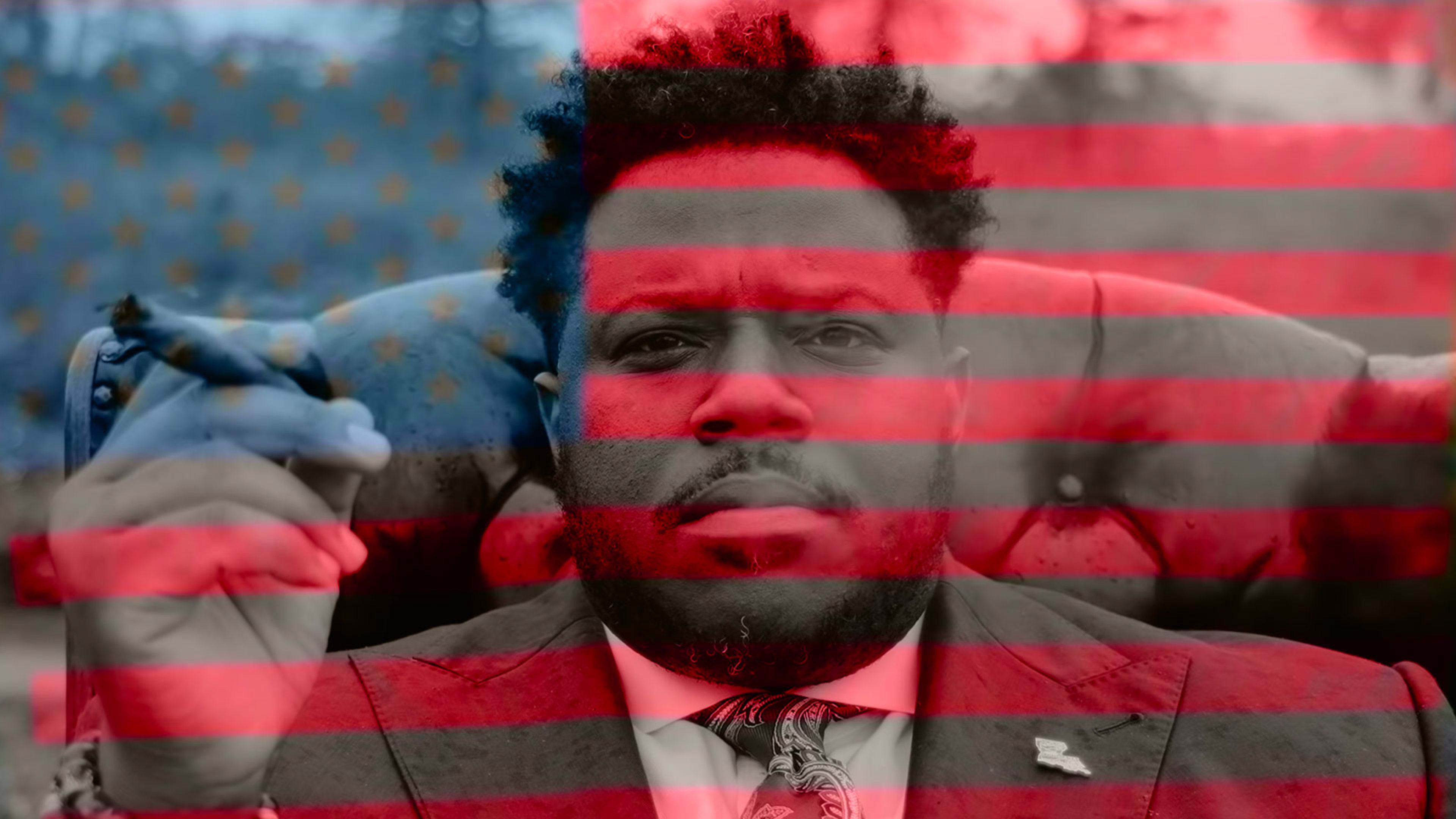In his second campaign ad for a U.S. Senate seat in Louisiana, Gary Chambers hangs a Confederate flag on a laundry line, all while listing reasons why Jim Crow has never really left the South. “The attacks against Black people, our right to vote, and participate in this democracy are methodical,” Chambers says in the ad’s voiceover. “Gerrymandered districts are a byproduct of the confederacy. Our system isn’t broken, it’s designed to do exactly what it’s doing, which is producing measurable inequity.”
Then he douses the flag in gasoline, and lights it on fire.
As the flames spread, Chambers lists off stats illustrating that inequality, “One in 13 Black Americans are deprived of the right to vote. One in nine Black Americans do not have health insurance. One in three Black children live in poverty. It’s time to burn what remains of the confederacy down. I do believe the South will rise again, but this time it’ll be on our terms.”
Last month, Chambers’s first campaign ad grabbed national attention and headlines for how it advocated for legalizing marijuana in Louisiana, with Chambers sparking up a blunt.
Grabbing attention with a provocative message is nothing new in politics or advertising in general, but what has set Chambers’s ads apart is how they combine a strong message with the visual language of a music video. To create these ads, Chambers is working with Baton Rouge-based filmmaker Erwin Marionneaux, and United Public Affairs, a firm founded by campaign staff vets from Andrew Yang’s presidential run.
United Public Affairs cofounder Erick Sanchez met Chambers last year during the candidate’s run in a special congressional race in Louisiana’s second district. Sanchez says that the process behind Chambers’s Senate ads isn’t complicated. They look at the issues Chambers is most passionate about, and how to craft messages around them that will get the most attention and engagement.
“We’re not just putting these ads together for shock value,” says Sanchez. “We have a powerful messenger, and the strategies are bold. In order to get attention in this attention economy, it takes a lot more than a generic campaign ad platform. So it’s about understanding and figuring out the points of connection that speak both to the candidate and electorate, and walking that line.”
Everyone keeps talking about the way our team does social media. Well it’s @TheErwinM my media director responsible for the visuals you see. He and I work daily on how we can authentically let you in.
Like he said, stay tuned. pic.twitter.com/yFaJYbBPiB
— Gary Chambers (@GaryChambersJr) January 26, 2022
The use of clear, stark imagery is a purposeful part of the strategy that takes a cue from the other side of the aisle.
“We think of visuals through the lens of what we’ve seen Republicans do in the past,” says Sanchez. “They’ve used guns and MAGA hats, and Gary is using joints and burning Confederate flags. This emotional-based messaging is nothing new, but I think people have seen our approach as refreshing. It’s cutting through a lot of noise, it’s speaking truth to these issues. Just look at what’s happening with voting rights across the country, and just this week here in Louisiana, the state senate passed a bill that will ensure Black communities are underrepresented in Congress.”
On Tuesday, Louisiana Senate Republicans approved a redistricting bill that proposes new U.S. House boundaries maintaining the status quo of white majority districts outnumbering Black majority districts five to one, despite new Census data that shows Black residents now make up one-third of the state’s population.
In historically red states like Louisiana, Sanchez says progressive Democratic candidates are typically ignored by the national party who see these states as lost causes, politically. In addition to attracting and exciting new voters, particularly younger voters, Sanchez hopes the broader attention the campaign is generating also sparks new discussions in terms of how the national Democratic Party thinks about his state. Until then, though, Chambers’s campaign is using its underdog status as a badge of pride.
“Maybe the benefit of starting a campaign in which national stakeholders have written it off is that we work with the mantra that we’re in this to win, and there is nothing to lose,” says Sanchez. “That helps set the stage for taking the kind of calculated risks we’re taking right now.”
Recognize your brand’s excellence by applying to this year’s Brands That Matter Awards before the early-rate deadline, May 3.
